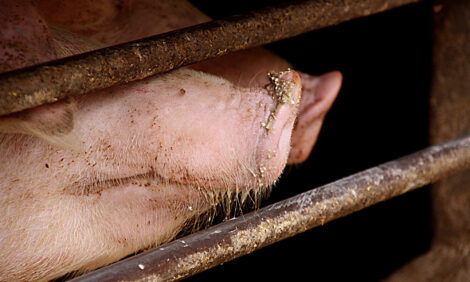



Map Highlights Real-time Parasite Risks in Local Areas
UK - Livestock farmers, vets and SQP’s will be able to get up to date parasite information in their local area thanks to the monitoring of worm, fluke and fly levels on 18 farms across the UK.The Parasite Watch scheme run by Zoetis, is now in its second year. The 18 farms involved in the scheme will have faecal samples taken every two weeks, which will help detect major stomach worms and Nematodirus.
Fluke will also be tested quarterly using copro antigen testing, which will pick up immature fluke at six weeks of age, giving farmers, vets and SQPs the most advance warning they can. Flies will be monitored on the farm using fly traps.
How to use Parasite Watch
The aim of Parasite Watch is to not only inform the farmers involved in the project about parasite levels on their farm, but to alert SQPs and livestock farmers to parasite risks in their local area by an interactive map, which can be found at www.parasitewatch.co.uk
Parasite data on the interactive map from each of the farms will be updated regularly, which will allow users to see if there are spikes in certain parasites in their area and enable them to take appropriate action.
With warmer weather enabling a longer grazing season and milder winters leading to more parasite survival, vet Dr Dave Armstrong from Zoetis, says farmers need to have some degree of knowledge about parasites on their farm and in their area.
He believes that as well as monitoring parasite risks by using the Parasite Watch map, farmers should also be using faecal egg counts and monitoring growth rates.
“If you are below your target growth rate, then that’s when you should start investigating.
“You can’t just judge by the calendar or what happened last year, you’ve got to look at stock, weigh stock and know what is going on,” he adds.
Sheep farmer tackles worms
Sheep farmer John Yeomans, Newtown, Wales, is one of the 18 farms involved in Parasite Watch.
He was involved in the scheme last year and says as a result of monitoring growth rates and cross referencing with faecal egg counts, he had some sheep that didn’t require any drenching last year.
He farms 500 Beulah/Speckled Face ewes and 200 ewe lambs, lambing in Mid-March.
In mid-May lambs are weighed before being turned on to the hill and are weighed at least every month thereafter, until they are weaned in July.
“Last year if we had lambs that were growing 200g a day or less, we were taking faecal egg counts. In the main, those with lower growth rates had more of a challenge with worms,” he says.
Mr Yeomans also didn’t worm ewes in good condition at turnout last year. “I aim to leave at least 20 per cent of ewes un-wormed- so last year I had some ewes, which weren’t wormed at all.”

How to use Parasite Watch
The aim of Parasite Watch is to show what is happening across the UK using an interactive map found at www.parasitewatch.co.uk.
Parasite data from each of the farms will be updated regularly, which will allow farmers, vets and SQP’s to see if there are spikes in certain parasites throughout the year in their area and enable them to take appropriate action.
To use the map, click on a farm in your area and details of any parasites that have been found as well as when they were detected will be displayed. Test results will be online within hours of the test being taken.






